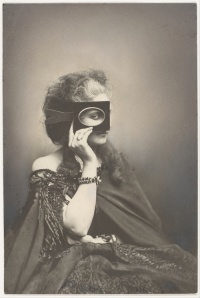1860s
From The Art and Popular Culture Encyclopedia

|
Related e |
|
Featured: |
The 1860s were an extremely turbulent decade with numerous cultural, social, and political upheavals in Europe and America. Revolutions were prevalent in Germany and the Ottoman Empire. The abolition of slavery in America led to the breakdown of the Atlantic Slave Trade, which was already suffering from the abolition of slavery in most of Europe in the late 1820s and '30s. In America, the civil war led to total war. After the Civil War, turmoil continued in Reconstruction, with the rise of white supremacist organizations like the Ku Klux Klan and the issue of granting Civil Rights to freed blacks. These controversies would last for almost a century and their reverberations are still felt to the modern day.
The first Salon des Refusés on May 17 1863 invited art-works rejected for display at the Paris Salon of 1863. Many consider this the birth of modern art. Absinthe becomes popular in Europe.
Literature and arts
- Artificial Paradises (1860) by Baudelaire
- Le déjeuner sur l'herbe (1863)
- The Birth of Venus (1863) Alexandre Cabanel
- The Painter of Modern Life (1863) by Baudelaire
- Notes from Underground (1864) - Fyodor Dostoevsky
- Alice's Adventures in Wonderland (1865) by Lewis Carroll
- Olympia (1865) by Manet
- War and Peace (1865-69) by Leo Tolstoy
- The Origin of the World, painted by Courbet in 1866, first publicly displayed in 1995
- Das Kapital (1867) by Karl Marx
- Woman in the Waves (1868) Gustave Courbet
- La Danse (1869) by Jean-Baptiste Carpeaux
- The Songs of Maldoror (1868-69) by Comte de Lautreamont
Births
- Georges Méliès (1861 - 1938)
- Arthur Schnitzler (1862 - 1931)
- Gustav Klimt (1862 - 1918)
- Rupert Carabin (1862 - 1952)
- Claude Debussy (1862 - 1918)
- Edvard Munch (1863 - 1944)
- Luigi Pirandello (1867 - 1936)
- Gaston Leroux (1868 - 1927)
- Paul Chabas (1869 - 1937)
See also

